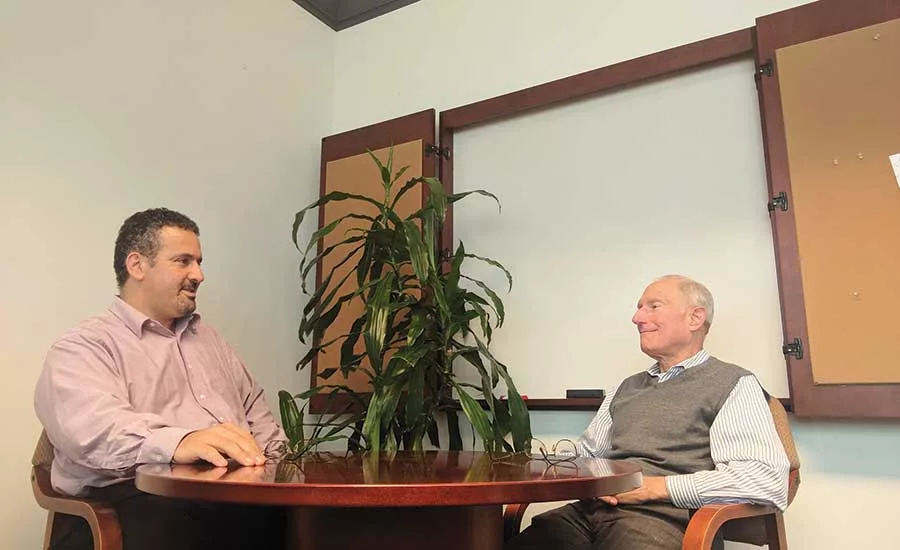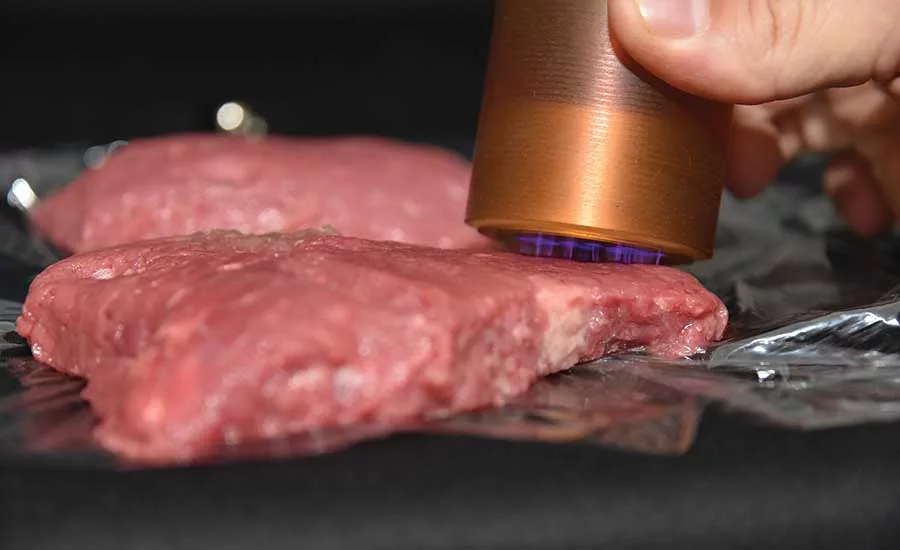Engineering R&D
Plasma sparks new cold sterilization technique
Plasma is known for being in TVs, cutting devices and futuristic rocket engines, but it also is an effective non-thermal lethality agent.


Studies have shown that plasma discharges can be used to decontaminate raw produce, dried nuts, meat, poultry, fish, granular foods (i.e., dried milk, herbs and spices), processing equipment and packaging materials. Source: Applied Plasma Solutions.
Turn on a fluorescent or sodium vapor lamp or plasma TV, or start your car, and plasma will be at work in each of these. Plasma is the fourth state of matter and is usually categorized as thermal or non-thermal. Thermal plasma is in equilibrium and occurs at high temperatures and, therefore, is not of much practical use. Non-thermal plasma, aka non-equilibrium plasma, can operate at room temperature while generating effective plasma chemistry, making it suitable for many applications.
While plasma could be useful in a number of food applications, using it to create a non-thermal sterilization system will likely be the most attractive to processors. This is why the technology development and contract research company, Advanced Plasma Solutions (APS), would like to team up with food safety experts and equipment builders to help design and develop plasma-based sterilization equipment.
As Simon Kassas, managing partner and executive vice president states, there is no “one size fits all” in applying plasma technology to non-thermal food sterilization. Each application must be considered for its efficacy, costs and how it fits into a processor’s overall food safety strategy.
But Kassas thinks that down the road, non-thermal plasma sterilization might just overtake HPP technology in terms of its use and capability. I visited APS in suburban Philadelphia and talked with Kassas and Dr. Joel T. Shertok, director of technical services, to learn more about APS and plasma technology as it is relevant to food applications.
FE: Who started APS?
Simon Kassas: APS was born out of a relationship with Drexel Plasma Institute, with the focus and intent to help Drexel University commercialize and license non-thermal plasma applications. During its first two years, APS was developing relationships and introducing corporate clients to the research labs at Drexel. APS eventually expanded and grew its operations into a 20,000-sq.-ft. facility in Malvern, PA, where it established its technical capabilities to complement the fundamental scientific work being done at universities. In its new space, the APS team established a fabrication shop, electrical engineering lab, plasma lab (and) 3D printing capabilities and brought on a technical staff to support all aspects of developing relevant plasma devices.
FE: What is APS’s skill set?
Kassas: APS is uniquely positioned to support its customers with conceptualizing, designing, testing, prototyping, optimizing and scaling non-thermal plasma and other thermochemical processes.
FE: What basic hardware is required in plasma-based food sterilization equipment?
Dr. Joel T. Shertok: Every plasma-based device consists of a unique power supply and plasma reactor to create, and then deliver, the plasma reactive species to an object, surface or other medium as designed. The APS team starts with the end user in mind. This allows us to understand the desired chemical reaction and to tailor applications to customers by identifying the best plasma discharge and reactor design for the job.
FE: How does plasma work in a food sterilization application?
Shertok: Plasma can have various uses in food sterilization processes, depending on market demand and customer requirement. For example, plasma can be directly applied to food items for microbial kill, or it can be applied to food items in an aqueous mist form where the plasma reacts with water droplets to create oxidized species that will offer the microbial kill. In addition, plasma can be applied to various substrates in the food processing environment to offer sterilization.
FE: What role should plasma play in an overall food sterilization program?
Kassas: Plasma can play many roles in food safety programs—from washing vegetables to pasteurization to sterilizing meat and poultry (and) to sterilization of equipment and/or packaging used in food processing. The most important consideration is that plasma brings a value to the end user that current technology is not delivering, or that current conventional technologies do not meet the more stringent sterilization parameters. The value of plasma-based technology is that it does not require synthetic chemicals. In addition, plasma is able to generate reactions on demand at the point of use.
FE: Is plasma technology scalable? How so?
Shertok: Yes, plasma is highly scalable. With proper engineering practices, product development and scaling methodologies, most plasma applications can be scaled to commercial applications. The projected total cost of operation and capital cost of a plasma system are always taken into consideration and vetted against current technologies during the APS review process. One of the primary advantages of plasma is that it is modular and does not require economies of scale. Therefore, the costs and efficacy you achieve in the lab can be directly correlated to expectations for commercialization.
FE: How affordable is this technology? Could small and medium-sized processors use it?
Kassas: Again, because of plasma’s modular nature, it can be scaled to any size operation. Still, plasma needs to be cost competitive with alternate technologies aimed at solving the same problems. One of the main focuses of developing new technologies, including plasmas, is to do so in a competitive manner. Plasma is an electrical discharge, and as a result, it will have an operational cost higher than many conventional technologies. However, increased regulations in the food industry and the demand for safer processing methodologies motivate the change to technologies with unconventional cost structures and unique advantages, like plasma.
FE: Can plasma sterilize packaging? Can it sterilize food in a poly bag?
Kassas: While package sterilization is still a highly experimental technology, it is APS’s hope and expectation that plasma technology will extend itself to these applications.
FE: Are any food processors experimenting with or using plasma technology?
Kassas: To our knowledge, many food processors are working with academia and research institutions to better understand the capabilities of non-thermal (cold) plasma technology. Furthermore, large sums of government grant funding are being distributed to universities to research cold plasma use for food safety and sterilization.
FE: What do you see in your crystal ball for non-thermal plasma sterilization in the food industry?
Kassas: We have no doubt that non-thermal plasma will play a key role in the future of food safety and sterilization. Its rate of acceptance into the mainstream will depend on the funding and resources put forth and the continued development of more stringent regulations in food safety and processing, along with the technology around it.
For more information, visit Advanced Plasma Solutions at www.advancedplasmasolutions.com.
Looking for a reprint of this article?
From high-res PDFs to custom plaques, order your copy today!









